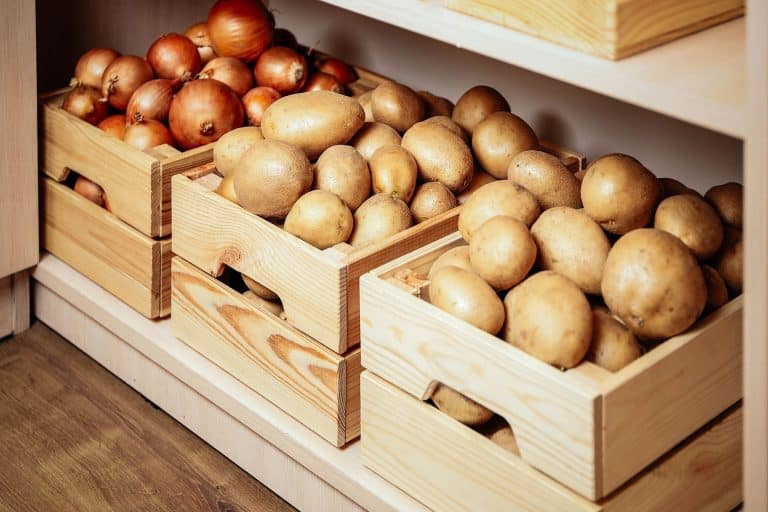Do you often turn your nose up at turnips, beets, kale, and broccoli? Think they’re too bitter, spicy, earthy, or otherwise unpalatable?
Perhaps it’s because you’ve never tried them “in season” from a winter garden when they’re at their peak flavor.
It’s like judging tomatoes by the supermarket tomatoes you buy in January—if that’s all you ever knew, it would be a travesty indeed. And it’s why I feel root crops are often grown in the wrong season.
One taste of a properly chill-sweetened root vegetable or leafy green—harvested in winter when they’re meant to be eaten—is usually enough to change most people’s minds about foods they find unpalatable.

The winter sweetening phenomenon
So why does the season matter, you ask?
Because we often plant cool-weather crops (like carrots, cabbage, and mustards) in spring, but truth is, these crops are better off planted in fall when they can mature in cold weather.
The standard practice of planting them early in the season and letting them mature in warm weather actually stops their natural physiological response to cold stress—and it’s not necessarily a good thing.
You see, all these root vegetables, brassicas, and other leafy greens want to develop in cold weather. They are well adapted with a defense mechanism that not only keeps them from dying in winter, it makes them sweet and delicious.
When temperatures drop, root crops convert some of their starches into sugars. This keeps the water in their cells from freezing, and it works the same way as putting salt on a road to keep it from icing over.
A lower freezing point means that while the cells inside the plant might have icy cold water, that water won’t turn into ice. Think of it as nature’s antifreeze.
In the cabbage family, cold weather increases sugars and releases special proteins in the plants (called “antifreeze proteins”) that provide freeze tolerance, which subsequently alter—and in our view, improve—their flavor.

All of these changes take time, which is why many leafy greens (kale, for instance) turn sweeter when hit with frost a few times. It might be alarming the first time you see a dusting of snow on your crops, but it’s simply just amping up the sugar content in your food! (In a good way, that is.)
The same goes for carrots, which end up tasting like carrot candy sticks if left in the ground over winter. I promise, you’ll be blown away if you ever do a taste test between a sweet, frost-kissed winter carrot and a bland, boring summer carrot.
Let root crops mature in cold weather
Now, I know it isn’t feasible to avoid spring planting completely for root crops and brassicas.
But the next time you plan your summer garden, adjust some of your planting dates so you have a round of root crops and brassicas (and a few other vegetables, as you’ll see in the list below) maturing in fall and winter.
(Some of these vegetables can even be planted last-minute in early fall for a quick harvest in 40 days or less.)
Read next: Find your first and last frost dates and put them into my custom planting calendar
In harsh climates that get down to 20°F or below, you can grow cold-hardy plants all winter under a simple low tunnel, covered with one or two layers of frost cloth. You don’t need to baby those veggies and keep them warm under plastic—remember, the point is to expose them to some cold while they develop, which they’re naturally built for. Compared to plastic, fabric row covers are easier to manage and work for most climates (including zone 5, where I grow and harvest vegetables year-round).

For added protection, pile on a thick 6- to 12-inch layer of straw mulch to keep the soil from freezing solid.
Four-season gardening is easiest this way, and with a little planning, you’ll likely find these chilly end-of-year harvests to be just as satisfying and scrumptious as your sun-warmed tomatoes (even if you’ve always thought winter gardening isn’t for you).
Vegetables that get sweeter after frost
While many vegetables are killed by frost, others can survive—and actually thrive—in freezing weather.
Plant these crops in mid to late summer and let them mature into the cooler temperatures of fall and winter. In zone 6b, I generally aim to get them in the ground soon after Labor Day.
For crops that won’t germinate in high soil temperatures, like spinach and lettuce, seeds are sometimes started indoors first, or sown later in the month once temps start to cool off.
- Carrots
- Turnips
- Radishes
- Rutabagas
- Beets
- Parsnips
- Celeriac
- Cabbage
- Kale
- Kohlrabi
- Broccoli
- Cauliflower
- Collards
- Brussels sprouts
- Mustard greens
- Radicchio
- Spinach
- Chard
- Lettuce
- Leeks

Does cold weather guarantee sweetness?
No, it doesn’t. Whether or not you notice any difference will depend on your taste buds (and unique presence of “bitter genes“), the plant cultivars themselves, local weather and growing conditions, and amount of sugars accumulated.
But odds are, you’ll probably enjoy a boost in sweetness from crops you’ve normally harvested in summer!















